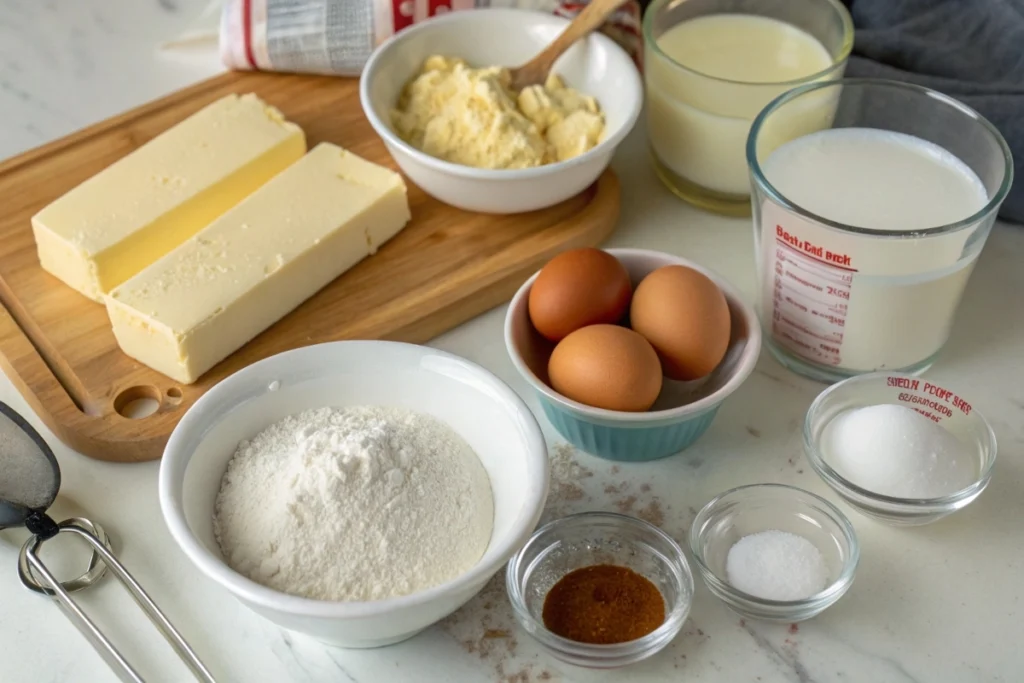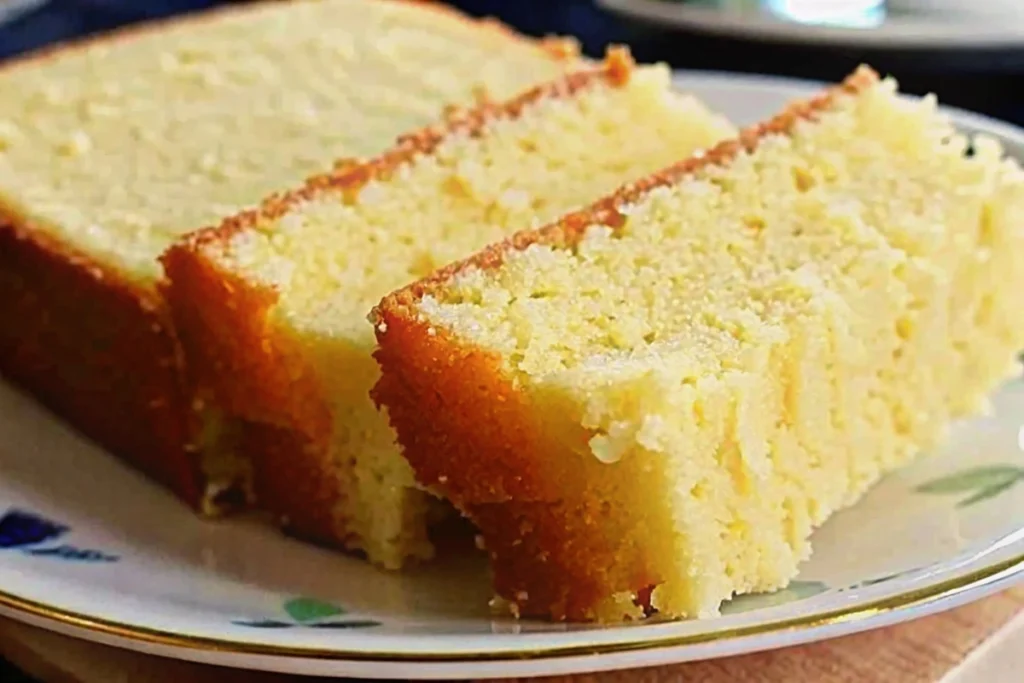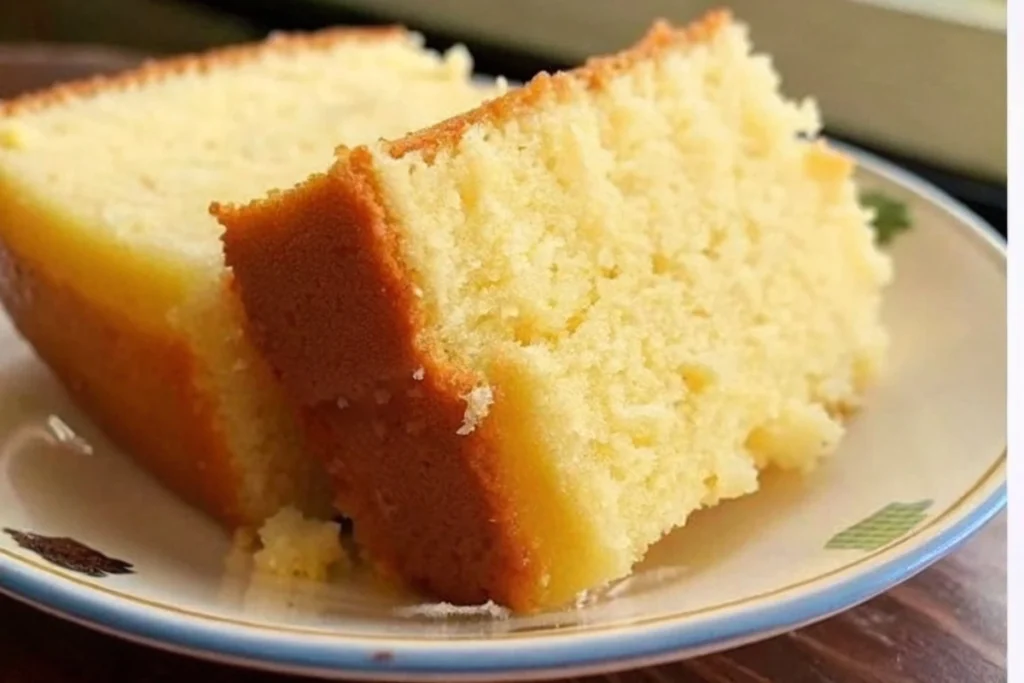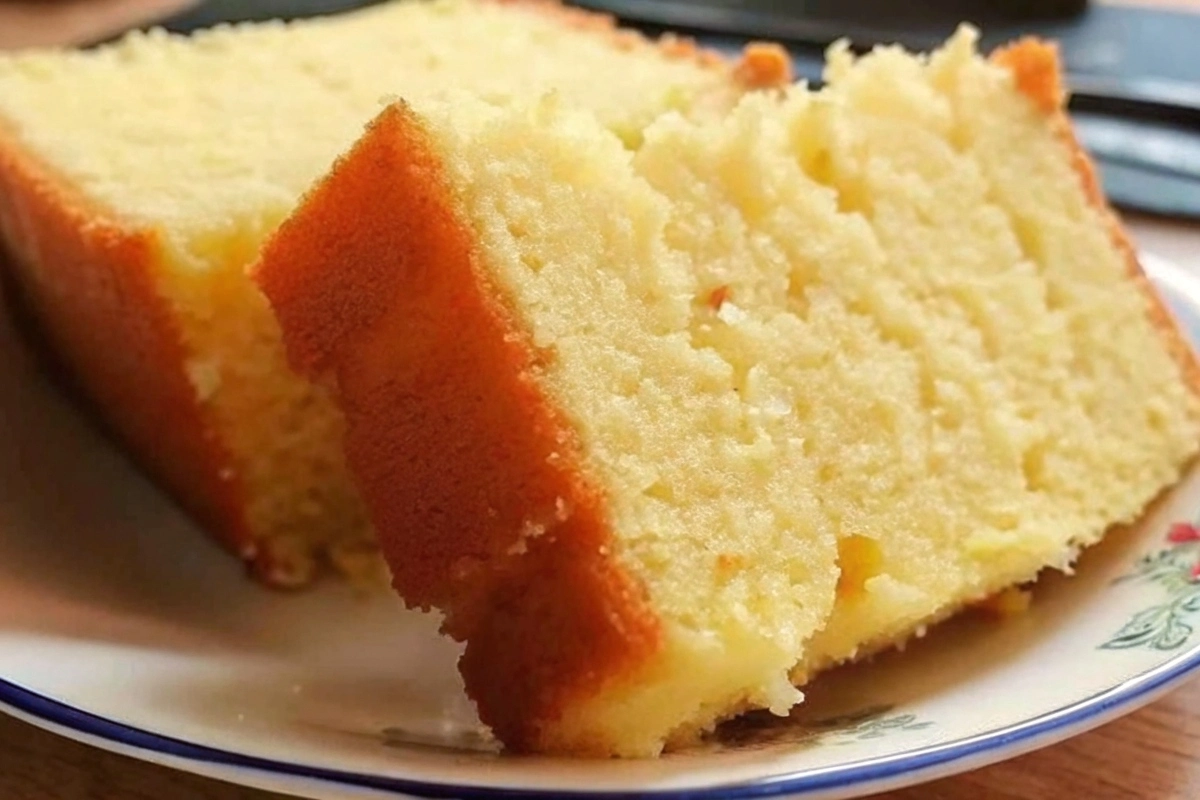A moist butter cake is the epitome of indulgence a classic dessert that brings warmth, comfort, and a burst of rich flavor with every bite. In this comprehensive guide, we will walk you through everything you need to know about creating the perfect butter cake recipe. Whether you’re a seasoned baker or just starting, this article is packed with insights, tips, and step-by-step instructions to help you achieve a tender, delightful cake that will impress family and friends.
In the journey of baking a moist cake recipe, understanding its background and the art behind each ingredient is crucial. For a deep dive into the evolution of cake recipes and various cake styles, check out this History and varieties of cake resource. Its detailed account of cake origins can offer you a broader perspective on how butter cake has transformed over time.
Moreover, exploring the science behind baking can greatly enhance your approach. Discover how the chemical reactions during baking contribute to that irresistible texture by visiting Coconut Cake with Walnuts. This resource breaks down the intricate processes that ensure your cake remains soft and tender, guiding you through each critical step.
History and Origins of Butter Cake
The history of the butter cake is as rich as its flavor. Tracing back centuries, this dessert has evolved from simple, rustic recipes to the sophisticated versions we enjoy today. Its popularity is rooted in the era when baking was both an art and a science, refined through generations.
- Evolution of the Recipe:
- Early Beginnings: Originally, cakes were made using basic ingredients like butter, flour, and eggs. These early recipes were cherished for their simplicity and rich taste.
- Cultural Influences: Over time, regional variations emerged, each adding a unique twist that reflected local tastes and available ingredients.
- Modern Twist: Today, the moist butter cake is celebrated for its perfect crumb and balanced sweetness, thanks to the meticulous techniques perfected by modern bakers.
The transition from humble beginnings to a revered dessert highlights the timeless appeal of the butter cake. Its ability to evoke nostalgia while remaining innovative makes it a staple in many kitchens around the world.
What Makes a Cake Moist?
Understanding what gives a cake its moist texture is essential for any baker aiming for perfection. A moist butter cake is characterized by a tender crumb, a rich flavor profile, and an inviting aroma that hints at the delicious experience to come.
- Key Characteristics:
- Tender Crumb: Achieved through the careful incorporation of air during the creaming of butter and sugar.
- Balanced Moisture: The correct ratio of liquids to dry ingredients ensures the cake does not become dry or overly dense.
- Rich Flavor: The use of high-quality butter and the perfect blend of ingredients elevates the taste, creating a harmonious balance of sweetness and buttery richness.
- Critical Factors:
- Ingredient Proportions: Precision in measurement is crucial. Too much flour or not enough butter can disrupt the balance, resulting in a cake that is either too dry or overly heavy.
- Baking Technique: Overbaking is a common pitfall. Monitoring the cake during the final stages of baking ensures that it retains its moist texture.
- Mixing Method: Proper creaming of the butter and sugar is fundamental, as it forms the base of the cake’s airy structure.
Achieving the perfect moist butter cake is both an art and a science, where attention to detail in each step ensures a consistently delightful result.
Key Ingredients and Their Roles
The secret behind an outstanding moist butter cake lies in the careful selection and combination of ingredients. Each component plays a vital role in ensuring the cake’s texture, flavor, and overall appeal.
- Butter:
- Role: Provides flavor, tenderness, and moisture.
- Tip: Always use high-quality, unsalted butter at room temperature for optimal results.
- Sugar:
- Role: Contributes to sweetness and aids in the creaming process, which is essential for a light, airy cake.
- Tip: Granulated sugar works best, but some bakers like to mix in a bit of brown sugar for extra depth.
- Eggs:
- Role: Act as a binder and help incorporate air into the batter, contributing to the cake’s lightness.
- Tip: Ensure eggs are at room temperature to improve the emulsification process.
- Flour:
- Role: Provides structure to the cake.
- Tip: Use cake flour if available, as it creates a finer, softer crumb. All-purpose flour is a viable alternative when cake flour is not on hand.
- Leavening Agents (Baking Powder/Baking Soda):
- Role: Ensure the cake rises properly, creating a light and airy texture.
- Tip: Check the expiration date of your leavening agents to ensure they are still active.
- Liquid (Milk or Buttermilk):
- Role: Adds moisture and helps blend the ingredients smoothly.
- Tip: Use at room temperature for better integration into the batter.
- Flavor Enhancers (Vanilla Extract, Citrus Zest, etc.):
- Role: Elevate the overall taste profile of the cake.
- Tip: Use pure extracts and natural zest to avoid artificial flavors.
- Additional Elements:
- Optional Ingredients: Nuts, dried fruits, or chocolate chips can be added to introduce texture and additional flavor layers.

Each ingredient has a specific function, and understanding these roles can help you tweak the recipe to suit your taste while ensuring your moist butter cake turns out perfectly every time.
Essential Equipment and Tools for Baking
Having the right tools is just as important as using the correct ingredients. To bake a flawless, moist butter cake, ensure your kitchen is equipped with the following essentials:
- Mixing Bowls:
- Usage: For combining ingredients smoothly.
- Recommendation: Use bowls of varying sizes to accommodate different stages of the mixing process.
- Electric Mixer or Stand Mixer:
- Usage: Crucial for creaming butter and sugar to create a light texture.
- Tip: Ensure the mixer is clean and functioning correctly to avoid any inconsistencies.
- Cake Pans:
- Usage: The shape and size of your cake pan can influence the baking time and texture.
- Tip: Use pans that allow for even heat distribution. Greasing and lining the pans properly can prevent sticking.
- Oven Thermometer:
- Usage: Verifies the accuracy of your oven’s temperature, which is vital for a consistent bake.
- Tip: Place the thermometer in the center of the oven for the best reading.
- Cooling Rack:
- Usage: Ensures the cake cools evenly, preventing condensation that might affect the texture.
- Tip: Allow the cake to cool completely on the rack before frosting or serving.
Having these tools at your disposal not only simplifies the baking process but also enhances the outcome of your moist butter cake.
The Science Behind a Moist Butter Cake
Baking is both an art and a science. Understanding the chemical reactions that occur during the baking process can help you achieve a consistently moist butter cake with a tender crumb.
- Creaming Process:
- When butter and sugar are creamed together, air is incorporated into the mixture, creating tiny air pockets that help the cake rise.
- Key Point: The quality of this step greatly influences the cake’s texture.
- Emulsification:
- The blending of eggs with fat ensures that the ingredients bind together seamlessly, creating a homogenous batter.
- Key Point: Room temperature ingredients are critical for successful emulsification.
- Leavening Reaction:
- Leavening agents such as baking powder or baking soda react with the other ingredients to produce carbon dioxide, which causes the cake to rise.
- Key Point: Proper measurement and freshness of these agents are vital for a perfect rise.
- Moisture Retention:
- The precise balance between wet and dry ingredients ensures that the cake retains moisture during baking.
- Key Point: Overbaking or too much flour can absorb moisture, resulting in a drier cake.
Understanding these scientific principles can help you troubleshoot common issues and refine your technique to consistently produce a moist butter cake that delights with every bite.
Preparation Tips and Techniques
The foundation of a perfect moist butter cake lies in meticulous preparation. Here are some practical tips and techniques to help you get started:
- Measure Accurately:
- Use a digital scale or measuring cups to ensure all ingredients are accurately portioned.
- Tip: Level off dry ingredients with a straight edge for consistency.
- Use Room Temperature Ingredients:
- Bring butter, eggs, and liquids to room temperature before mixing. This allows for better emulsification and a smoother batter.
- Tip: Plan by taking these ingredients out of the fridge at least 30 minutes before you start.
- Preheat Your Oven:
- Always preheat your oven to the required temperature. This ensures even baking right from the start.
- Tip: Use an oven thermometer to confirm that your oven is at the correct temperature.
- Do Not Overmix:
- Overmixing the batter can lead to a dense and tough cake. Mix just until the ingredients are combined.
- Tip: Stop mixing as soon as you see no streaks of flour.
- Mind the Baking Time:
- Start checking the cake a few minutes before the recommended baking time. Use a toothpick to test for doneness—if it comes out with a few moist crumbs, the cake is ready.
- Tip: Remember that every oven is different; adjust the baking time as needed.
Following these tips can significantly improve the outcome of your moist butter cake, ensuring that every slice is as delightful as the last.

Step-by-Step Recipe Guide
Creating a moist butter cake from scratch may seem daunting, but with a clear, step-by-step approach, you can achieve bakery-quality results in your kitchen. Below is a detailed recipe guide:
Ingredients
- 2 cups of all-purpose flour (or cake flour for a finer texture)
- 1 ½ cups of granulated sugar
- 1 cup of unsalted butter, at room temperature
- 4 large eggs (room temperature)
- ½ cup of milk (or buttermilk for extra tenderness)
- 2 teaspoons of baking powder
- 1 teaspoon of vanilla extract
- Optional: 1 teaspoon of citrus zest or ½ cup of chopped nuts for added flavor
Instructions
- Preparation:
- Preheat your oven to 350°F.
- Grease and line a 9-inch round cake pan with parchment paper.
- Ensure all ingredients are at room temperature.
- Creaming the Butter and Sugar:
- In a large mixing bowl, beat the unsalted butter and granulated sugar together until the mixture is light and fluffy.
- Bullet Points:
- Beat for about 3-5 minutes using an electric mixer.
- Scrape down the sides of the bowl periodically.
- The mixture should be pale and airy.
- Incorporating the Eggs:
- Add the eggs one at a time, beating well after each addition.
- Bullet Points:
- Ensure each egg is fully incorporated before adding the next.
- This gradual addition helps maintain the emulsion and structure.
- Combining Dry Ingredients:
- In a separate bowl, sift together the flour and baking powder.
- Bullet Points:
- Sifting prevents lumps and ensures even distribution.
- This step is crucial for achieving a light, even crumb.
- Mixing the Batter:
- Slowly add the dry ingredients to the creamed mixture, alternating with the milk.
- Stir gently until just combined.
- Bullet Points:
- Avoid overmixing to maintain a tender texture.
- The batter should be smooth and free of streaks.
- Adding Flavor Enhancers:
- Stir in the vanilla extract and, if desired, citrus zest or chopped nuts.
- Bullet Points:
- These ingredients elevate the flavor without compromising moisture.
- Mix until just incorporated.
- Baking:
- Pour the batter into the prepared pan.
- Bake in the preheated oven for approximately 35-40 minutes.
- Bullet Points:
- Check doneness by inserting a toothpick in the center; it should come out with a few moist crumbs.
- Avoid overbaking to retain moisture.
- Cooling and Serving:
- Remove the cake from the oven and allow it to cool in the pan for 10 minutes.
- Transfer to a cooling rack to cool completely before serving or decorating.
- Bullet Points:
- Cooling prevents condensation that might alter the texture.
- Patience is key for the best results.

Following this recipe ensures that every slice of your moist butter cake is soft, flavorful, and beautifully textured.
Variations and Flavor Enhancements
Once you master the classic moist butter cake, you might be tempted to experiment with different variations and flavor enhancements. Here are some creative ideas:
- Adding Citrus:
- Incorporate lemon or orange zest into the batter for a fresh, tangy twist.
- Tip: Adjust the amount based on your flavor preference.
- Incorporating Extracts:
- Replace vanilla extract with almond or coconut extract for a unique flavor profile.
- Tip: Use high-quality extracts to ensure an authentic taste.
- Mix-Ins:
- Fold in chopped nuts, dried fruits, or even a handful of chocolate chips.
- Bullet Points:
- Nuts add a pleasant crunch.
- Dried fruits provide a subtle sweetness and texture contrast.
- Chocolate chips offer delightful pockets of melted flavor.
- Layered Cakes:
- Create a layered butter cake by splitting the baked cake horizontally and adding your favorite frosting or fruit compote in between.
- Tip: Ensure the layers are even for a visually appealing presentation.
These variations not only personalize your recipe but also keep the experience of baking fresh and exciting. Experiment with different flavors to discover your signature twist on the classic moist butter cake.
Serving Suggestions and Presentation Ideas
A moist butter cake is not just a treat to eat; it’s a feast for the eyes as well. Consider these ideas to serve and present your cake in style:
- Frosting Options:
- Buttercream Frosting: A classic choice that pairs perfectly with the rich flavor of the cake.
- Glaze: A simple sugar glaze can add a shiny finish and extra flavor.
- Dusting of Powdered Sugar: For a rustic, elegant look.
- Bullet Points:
- Experiment with different colors of frosting for a festive appearance.
- Add edible flowers or sprinkles for a creative touch.
- Plating Techniques:
- Serve individual slices on attractive plates with a garnish.
- Arrange slices on a tiered cake stand for an impressive display.
- Bullet Points:
- Use fresh fruit, such as berries or citrus slices, to add a pop of color.
- Consider pairing the cake with a complementary beverage (such as coffee or tea).
- Layered Presentations:
- If you’ve made a layered cake, slice it to reveal the beautiful interior and any filling or frosting between the layers.
- Bullet Points:
- A vertical slice can highlight the contrast between layers.
- Use a sharp knife for clean, precise cuts.
Presentation can elevate your moist butter cake from a simple dessert to a show-stopping centerpiece at any gathering.
FAQs
Here are some frequently asked questions about the moist butter cake, along with straightforward answers to help guide you through any uncertainties:
- How do I keep my butter cake moist for days?
- Answer: Use the correct ratio of ingredients, avoid overbaking, and store the cake properly in an airtight container.
- Can I substitute ingredients to customize the flavor?
- Answer: Absolutely. Experiment with alternative extracts, zests, or mix-ins like nuts or dried fruits to create your signature twist.
- What is the best frosting to complement a moist butter cake?
- Answer: A classic buttercream frosting works beautifully, but a simple glaze or even a dusting of powdered sugar can also enhance the flavor.
- How do I know when my cake is done?
- Answer: Insert a toothpick in the center. When it comes out with a few moist crumbs, the cake is ready.
- Can I use different pan sizes and still achieve a moist texture?
- Answer: Yes, but adjust the baking time accordingly. Smaller pans might require a shorter baking period, while larger ones may need a bit more time.
Conclusion
Creating a flawless moist butter cake is a journey that combines time-tested recipes, careful technique, and a bit of creative flair. By following the detailed steps and tips outlined in this guide, you can confidently bake a cake that is tender, flavorful, and a true delight for any occasion.
Embrace the art of baking with passion and enjoy every step of the process. Your moist butter cake will not only be a treat for the taste buds but also a beautiful creation to share with loved ones.

